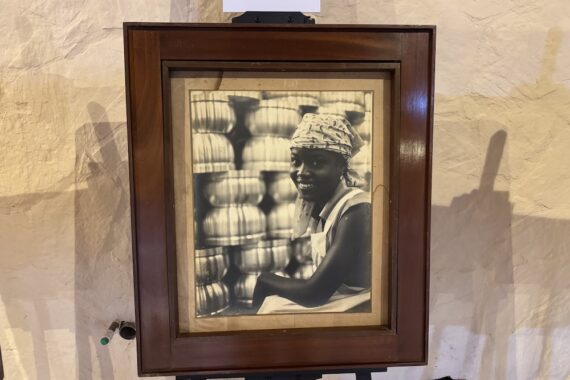By John Owoo
(Accra – Ghana)
An exhibition of pictures by the late American photographer Willis Bell, titled “Light and Shadow: A Movement in Stills,” concluded last month in Accra.
Indeed, the exhibition presents a remarkable selection of his photographs, prints, and negatives, offering audiences a rare opportunity to experience his vision of Ghana in the years following independence.
Bell, who made Ghana his home during the transformative 1960s, chronicled the nation’s evolution with both intimacy and breadth. His lens captured the collective energy of a country finding its footing under Kwame Nkrumah, tracing the momentum of independence through parades, rallies, and public celebrations.
Yet, Bell’s sensitivity extended beyond grand gestures. His photographs linger on dancers mid-step, children at play, and workers immersed in their tasks, while revealing the subtle choreography of daily life.
The exhibition’s title, Light and Shadow, aptly reflects Bell’s mastery of contrast—not only in tone and texture but also in meaning. Through the interplay of illumination and obscurity, the images meditate on what is visible and what remains hidden, what is preserved and what fades away.
Noted for documenting vernacular and political life in Ghana during the post-colonial period (1957-1978), Bell’s photographs inhabit the tension between optimism and uncertainty, embodying the light and shadow of a young nation’s aspirations.
Curated with scholarly precision, the exhibition also acknowledges the meticulous archival work that has brought Bell’s oeuvre to light. The effort to digitize, conserve, and reinterpret his photographs transforms them from historical artefacts into living testaments of Ghana’s cultural memory. These images speak to both the past and present—reminding viewers that history is a continuous movement, not a static record.
Set within the serene grounds of Mmofra Place, a space steeped in artistic and civic heritage, the exhibition invites reflection. Here, Bell’s images resonate not only as documentation but as poetic meditations on becoming—a reminder that independence was lived through gestures as much as through politics.
The Willis Bell Archive holds over 48,500 original photographic negatives and prints. Notable for its extensive scope, the archive documents a pivotal period in Ghanaian history, showcasing key political figures, significant events, industrialization efforts, and everyday life in communities across Ghana following independence.
Mmofra Foundation will digitize 4,375 photographic prints from the archive, preserving this valuable heritage resource and enhancing its accessibility by publishing it in the Modern Endangered Archives Programme’s open-access repository.
































Much appreciating this thoughtful review. It does a perfect job of framing the exhibition in its historical-documentary as well as artistic significance. (I went twice!), I like the clear, straightforward writing, too. These days so many narratives about shows come off as grandiose gobbledegook, but not this one. Bravo and thank you.